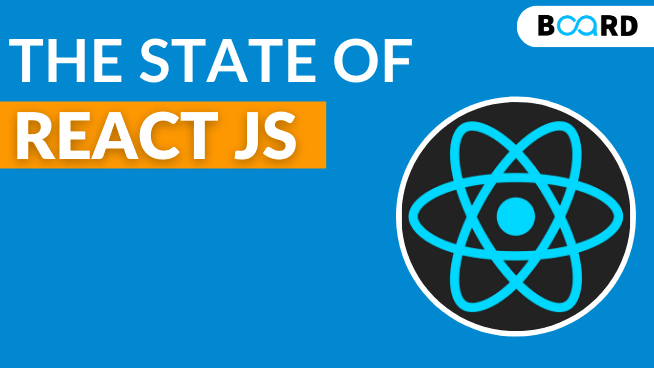Mastering ReactJS: Understanding Hooks, Components, and Libraries
The state of React in 2022 – Re-Inventing The Experience of User Interface Design

A system or platform is as easy & friendly as it looks – signifies the importance of user interface design in the acceptance and utilization of a particular system or application. React refers to an encapsulated set of pre-defined functions & features in the form of JavaScript library which can be used to design interactive user interfaces. The library enables designers to break down complex and intricate design patterns into smaller, logical and manageable chunks of codes (often termed as components) which are then amalgamated to form fully-fledged design patterns. While a few of the features provided by React are loved by developers and designers (and inevitably become their first choice); there are a few dreadful features as well.
1. State Management – Frightful aspect of React
State Management is one of the most fundamental aspects of user interface design as the state of one component (or control) depends on the state of others. React provides a pre-defined function setState () using which a component & its dependent can be rendered basis a particular logic. However, managing state with React brings in scalability & performance issues specifically in cases of complex designs & component tree.
React Context API, one of the key features intends to solve performance issues related to state management. The React Context API caters to the case of prop drilling wherein the framework allows designers to pass underlying data through the component tree without the requirement of passing props at multiple levels of the tree. Hence, this enhancement would allow designers to declare virtual global variables/values which can be exchanged across any components in the design tree.
2. Redux vs. Unstated vs. Mobx
The familiarity and acceptance of ‘Redux’ for state management is so high that designers at times fall prey to over-utilizing or burdening it with too much stuff. The user-friendly features of Redux enables designers to better control & predict the states of components; by holding the state tree of the entire application. Going forward (in 2021), React is advocating against over-utilization of Redux as it negatively impacts the manageability & traceability of the application.
This is where alternate methods & techniques comes in – Unstated & Mobx. The working principle of ‘Unstated’ is largely aligned to the doctrine of making individual components independent & re-usable rather than allowing designers to couple multiple components together to generate a complex architecture. The new
React Context API; which is one of the awaited features in 2022; would facilitate the integration of ‘Unstated’ to the ‘React’ framework. The state management in this case is implemented by a simple container class (similar to a state-enabled controller). The middleware eco-system of Unstated, however, may not be as mature as Redux which still makes Redux the desirable option.
Mobx is another state management option which may be integrated & explored with React. The key advantage that Mobx brings to the table is that the states can be persisted in the form of data structures which can then be automatically updated. Therefore, this option enables designers to observe and track changes to state & update data accordingly.
3. Better management of local state – ‘Suspense’ mechanism
As iterated and emphasized in the International JavaScript conference, the forthcoming developments and enhancements would focus on a more convenient and easy management of the local state. The highly trending ‘suspense’ mechanism using which components can virtually wait for the data to load before rendering; would in turn propel multiple libraries focused on optimal fetching of localized data; and caching them to ease the data exchange process.
However, as is evident in other technologies, there is no ‘one size fits all’ resolution which fits the customized needs of all designers & businesses. The focus has always remained on innovations & developments which would carry forward the architecture & framework focusing on scalable and quality user interface solutions.
4. Conclusion
React in the upcoming year has made advancements in heaps and bounds in making the framework much more user-friendly; and providing state of art features so as to minimize the quantum of manual code in any applications. The key point of difference is their focus on ‘state management’ which is one of the crucial factors in web development. The React Context API, which is an improvisation on the conventional React framework has propelled it to be one of the most preferred web development technologies in 2022.
